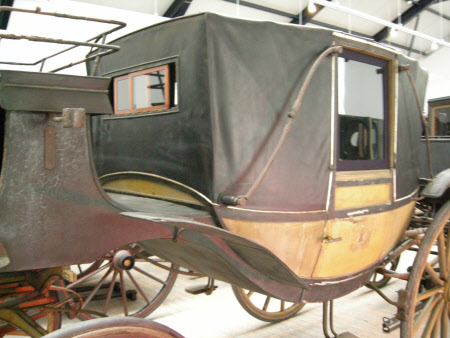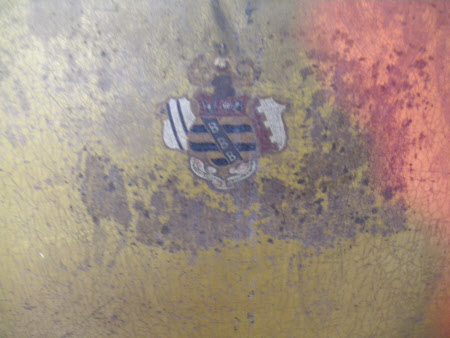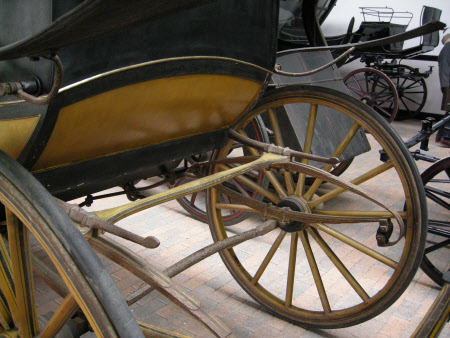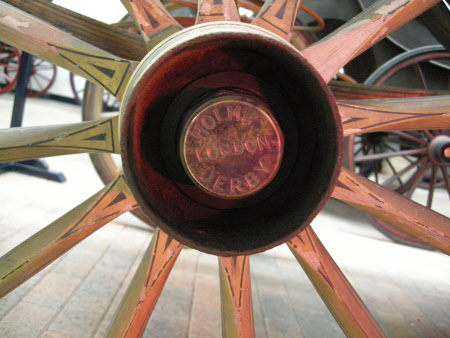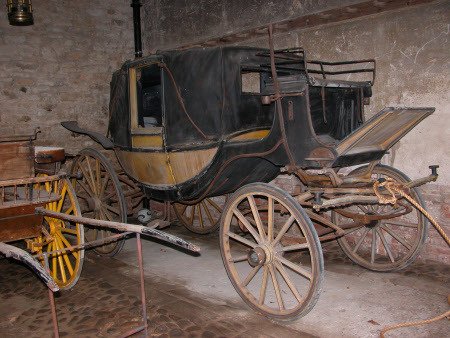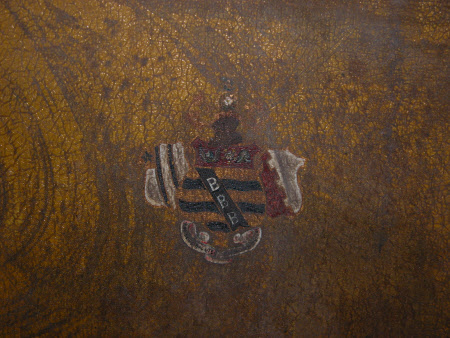Canoe landau
Holmes and Son
Category
Carriages & other vehicles
Date
Unknown
Materials
Painted wood body with leather hood, wool cloth upholstery and four rubber shod wheels.
Measurements
207 x 370 x 173cm (6ft 9 1/2in x 12ft 1 2/3in x 5ft 8 1/8in)
Order this imageCollection
National Trust Carriage Museum
NT 272952
Caption
This small landau became very popular with the professional and middle classes as a small and light but versatile carriage for all types of driving conditions. Coachman driven, the groom would be seated next to him. The heads could be closed completely, or put fully down depending on weather conditions, surroundings, or perhaps just how much you wanted to show yourself off.
Summary
Canoe Landau built by Holmes of Derby circa 1850. Canoe Landau (four wheels) for a pair or team of horses. A typical but very good canoe landau sprung on elliptic springs with bowed hind ends to the top components. The footboard is on brackets. The hinged front floor and the coachmans heelboard are missing. Interior upholstered in blue wool cloth. Painted black and yellow with black and yellow lining.
Full description
Typical but very good canoe landau on elliptic springs with bowed hind ends to the top components. Footboard on brackets. Hinged front floor and coachmans heelboard missing. In yellow and black livery. At the start of the nineteenth century landaus were big heavy carriages, open versions of the contemporary coaches. Later in the century, when many more people could afford to own carriages, everyday carriages became smaller and lighter. A successful professional family who could afford to employ a coachman would very likely own a brougham, a closed carriage for bad weather and night-time use, and a victoria, an open carriage for use in fine weather. This was an ideal combination but, if they owned a landau, they only needed one carriage for both uses because, with the head raised, it was a closed four seat carriage, but it could be quickly and easily converted to an open carriage simply by lowering the head. Several different styles of everyday landaus were developed. The canoe landau was obviously so named because it has a canoe-shaped body. If a canoe-bodied landau was so small that it could be pulled by one horse it was called a Sefton landau, after the Earl of Sefton for whom the first one was built, and it was considered a breakthrough for a landau to be so small at that time. If the body had an angular profile and a deep foot well it was called a Shelburne landau, after the Earl of Shelburne who had the first of that pattern built. Early landaus had head joints, the hinged stays visible outside the leather of the head, which kept it tightly stretched, but a servant had to get down to raise or lower the head. Many types of head lifts were later developed, spring-assisted mechanisms that were fitted between the head leather and the fabric head cloth ‘which facilitate the closing and opening of the heads, almost as simple in action as the opening or closing of an umbrella or a parasol’ as the celebrated carriage builder G. N. Hooper wrote in 1890.
Provenance
originally from East Riddlesden Hall, Yorkshire
Marks and inscriptions
On side panels: Family crest: ‘Prosoere Salute, Phq salute sempere On axle caps.: HOLMES DERBY On all axle components.: G14 HOLMES DERBY On reduced section of axle components.: 11903
Makers and roles
Holmes and Son, carriage builder

